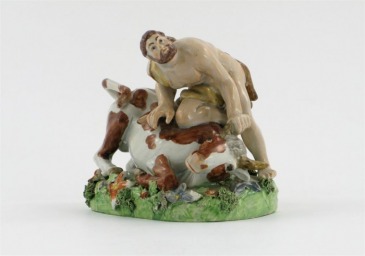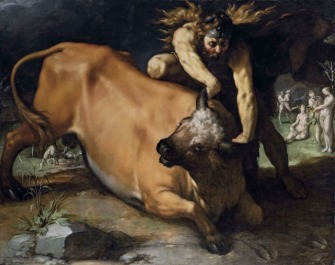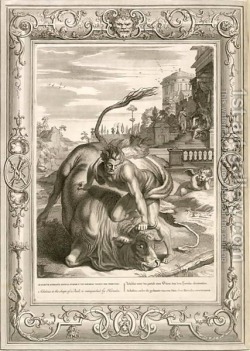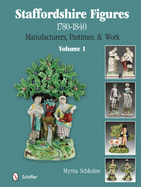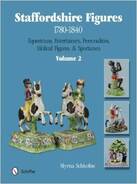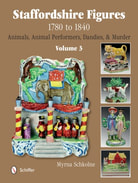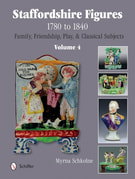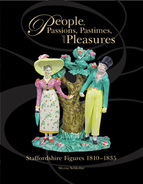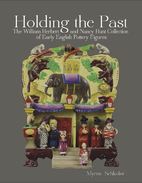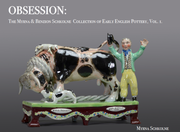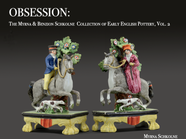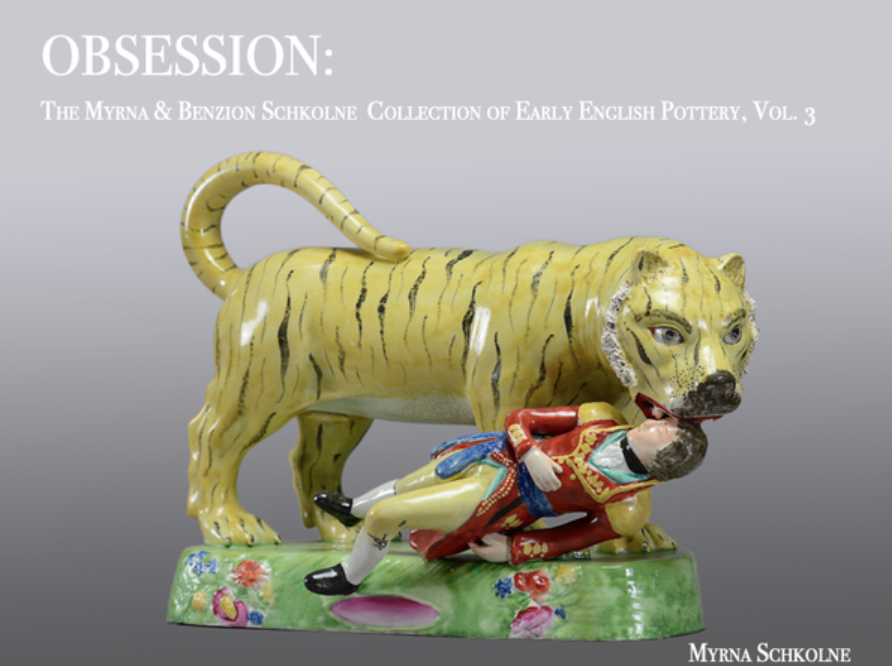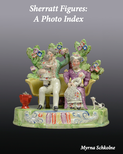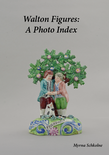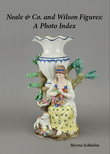The ancients, with no email to take up the day, instead found hidden meaning in their mythological tales. They explained the fight of Hercules and Achelous as Achelous being a river that in rainy seasons overflowed its banks. When the river swelled, it made another pointed channel--thus Acheous's head was horned. The struggle is shown in classical art with Hercules pressing his knee into the bull's back and holding its horns, just as on the Staffordshire figure. This pose differs from that in representations of Hercules fighting the Cretan bull, which was one of the twelve labors meted out to him as punishment for slaying his children.
|
Staffordshire figure collectors in search of the "cute" tend to turn away from classical figures. Lacking a "cute" gene in my body, I despise cuteness with an intensity. I find charm rather than "cute" in the myriad engaging figures that reflect life as it once was in the early 19th century. Yet the longer I collect, the more I am drawn to figures with classical subjects. Recently, Andrew Dando sold this superb figure of Hercules and the bull at his Exhibition. The figure tells the story of the Roman mythological hero Hercules, who personified courage. He wrestled Achelous for the love of Deianeira. Although Achelous assumed the form of a bull, Hercules prevailed. The ancients, with no email to take up the day, instead found hidden meaning in their mythological tales. They explained the fight of Hercules and Achelous as Achelous being a river that in rainy seasons overflowed its banks. When the river swelled, it made another pointed channel--thus Acheous's head was horned. The struggle is shown in classical art with Hercules pressing his knee into the bull's back and holding its horns, just as on the Staffordshire figure. This pose differs from that in representations of Hercules fighting the Cretan bull, which was one of the twelve labors meted out to him as punishment for slaying his children. Cornelius van Haarlem's "Hercules and Achelous" (1590) is perhaps the best known of the classical renditions of this scene. The 8-foot long painting surpassed an estimate of $1 million-$1.5 million to sell for $8 million and change at Christies last year. The picture had just been returned to its German owner after the East German policed seized it in 1984 for "incorrectly filed taxes" and dumped it in Berlin's Bode Museum. Either a print of the painting or a derivative art work, such as Bernard Picart's 18th-century engraving below, inspired our Staffordshire figure. Our Staffordshire figure is attributable to the Wood and Caldwell manufactory, and thus we can date it to between 1790 and 1818. Cursory research has me thinking that no earlier models were made by England's porcelain factories, but who would want one? Only pottery can capture the strength of this struggle.
0 Comments
Leave a Reply. |
Archives
February 2024
All material on this website is protected by copyright law. You may link to this site from your site, but please contact Myrna if you wish to reproduce any of this material elsewhere. |
